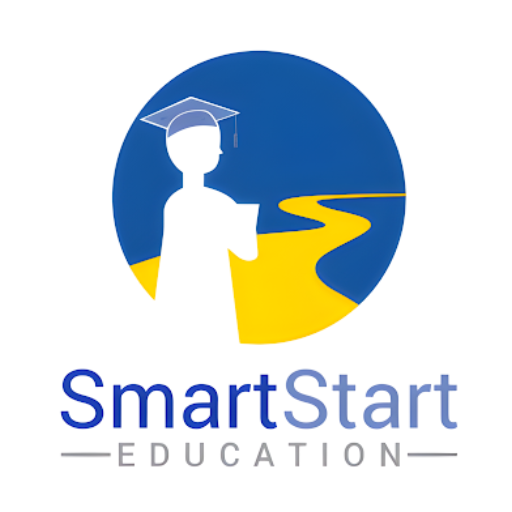High-Dosage Tutoring



High-Dosage Tutoring Designed for Measurable Student Growth
Accelerate learning and close achievement gaps with a research-backed tutoring model created for K-12 districts.
SmartStart Education was an early adopter of high-dosage tutoring, building our programs directly from the research developed at Johns Hopkins University School of Education.
Our Founder and CEO, Dr. Isaak Aronson, served as a Senior Lecturer at Johns Hopkins from 2014 through 2023, which influenced the creation and refinement of effective high-dosage tutoring strategies used today.
We bring that same academic rigor and implementation expertise to every school district partnership.
Learn More About High-Dosage Tutoring

Why High-Dosage Tutoring Works
High-dosage tutoring is one of the most effective ways to increase student achievement. When delivered consistently by trained educators and aligned with core instruction, high-dosage tutoring supports rapid and sustained academic growth.
SmartStart’s high-dosage tutoring model emphasizes:
- Consistency and frequency
- Small student-to-tutor ratios
- Tutors with real teaching experience
- Instruction based on student data
- Collaboration with school staff
Together, these elements ensure students receive the personalized, focused support they need to make meaningful and lasting academic gains.
Seven Key Elements for a Successful Program
SmartStart’s high-dosage tutoring programs are effective because we embed the following hallmarks of successful HDT programming:
SmartStart aims to run its HDT programs during the school day whenever possible. In addition, we have the capacity to reach additional students by offering before and after-school tutoring, as well as tutoring sessions on the weekends or during school breaks.
Our high-dosage tutoring programs can be offered up to 5 days per week and range in length from 30 to 90 minutes per session.
We limit our high-dosage tutoring sessions to four students or less to provide in-depth help for each child.
SmartStart’s Talent Acquisition Team is comprised of experienced educators who select the most qualified tutors with the requisite content mastery and teaching experience. We provide our tutors with continual oversight and ongoing, stimulating and innovative training.
Our tutors are carefully monitored, using a virtual clock-in system with location identification, so we know that tutors arrive at the correct location on time and leave on time.
SmartStart high-dosage tutoring programs use data to assess our effectiveness at improving student learning. Our tutors work with your staff to make regular adjustments based on this data.
Our tutors use engaging materials aligned with state standards and research to help students quickly grasp concepts and apply their knowledge in the classroom.
SmartStart uses a proprietary 360° algorithm for evaluation of its tutoring programs. The methodology and algorithm were developed by the Founder/CEO, Isaak Aronson, who oversees the program evaluation process.

A Dedicated Team Supporting Your School
SmartStart’s program directors, administrative staff, and team of educators stay in continual communication with school leaders to ensure every part of the tutoring program runs smoothly. We manage staffing, training, scheduling, oversight, progress monitoring, and reporting.
Our tutors collaborate directly with teachers to understand student needs and support strong instructional alignment.
Contact SmartStart Education Today



Data-Driven Results and Flexible Implementation
SmartStart’s high-dosage tutoring model is built on both evidence and adaptability. Using a proprietary 360-degree evaluation algorithm developed by Dr. Aronson, we measure student progress, tutor effectiveness, program fidelity, and overall instructional impact. These data insights drive continuous improvement and ensure our supports remain aligned with your academic goals.
At the same time, our tutoring programs are fully customizable to district needs. Whether you’re implementing a large-scale initiative or starting with a targeted student group, SmartStart designs flexible schedules, aligns instruction with your curriculum, and integrates seamlessly with existing school structures.

Ready to Improve Student Outcomes?
SmartStart Education delivers high-dosage tutoring that accelerates learning, strengthens staffing capacity, and supports district instructional goals.
Our evidence-based programs provide targeted, personalized support for each student, while our experienced team partners closely with school leaders to ensure measurable academic gains.
Contact us today to learn more about how high-dosage tutoring can benefit your district.
Read Our Tutoring Blogs
CABE Journal Highlights SmartStart Education’s High-Dosage Tutoring
Published November 14, 2025
SmartStart Education is proud to share that CABE Journal, the Connecticut Association of Boards of Education’s official publication, recently featured an article written by our Founder and CEO, Isaak Aronson, along with SmartStart Grant Writer Kayla Lowe. Their piece, “Unlocking Student Succes...
Top Priorities for School Leaders This Back-to-School Season
Published September 4, 2025
The start of a new school year is both exciting and demanding for school leaders. From staffing to student well-being, there are countless moving parts that need attention. This season offers an opportunity to set the tone for the school year ahead, focusing on strategies that support both educators...
How Adaptive Learning Is Transforming Intervention
Published July 25, 2025
Personalized learning isn’t just a trend – it’s a game-changer for student success. At SmartStart Education, we believe every student deserves instruction tailored to their unique learning needs. That’s why we’ve partnered with Houghton Mifflin Harcourt (HMH) to bring adaptive learning solutions dir...
AI in the Classroom: Cool Tool or Classroom Crutch?
Published April 22, 2025
Why Human Connection Still Matters in Teaching and Tutoring Artificial Intelligence (AI) is making its way into classrooms across the country, transforming the way students learn and teachers teach. From adaptive learning platforms to instant grading tools, it’s easy to see why AI has gained moment...
Smart Strategies for Community Connections
Published March 19, 2025
Engaging with your community is more than just sending out newsletters and posting on social media—it’s about building trust, fostering connections, and ensuring families, students, and staff feel heard and valued. When school districts prioritize strategic and thoughtful community engagement, they...
Funding High-Dosage Tutoring: What Schools Need to Know
Published March 5, 2025
How Shools Can Fund High-Dosage Tutoring High-dosage tutoring is one of the most effective ways to accelerate student learning, but let’s be honest—securing the funding to make it happen can be a challenge. The good news? There are multiple funding sources available, from federal and state grants t...
